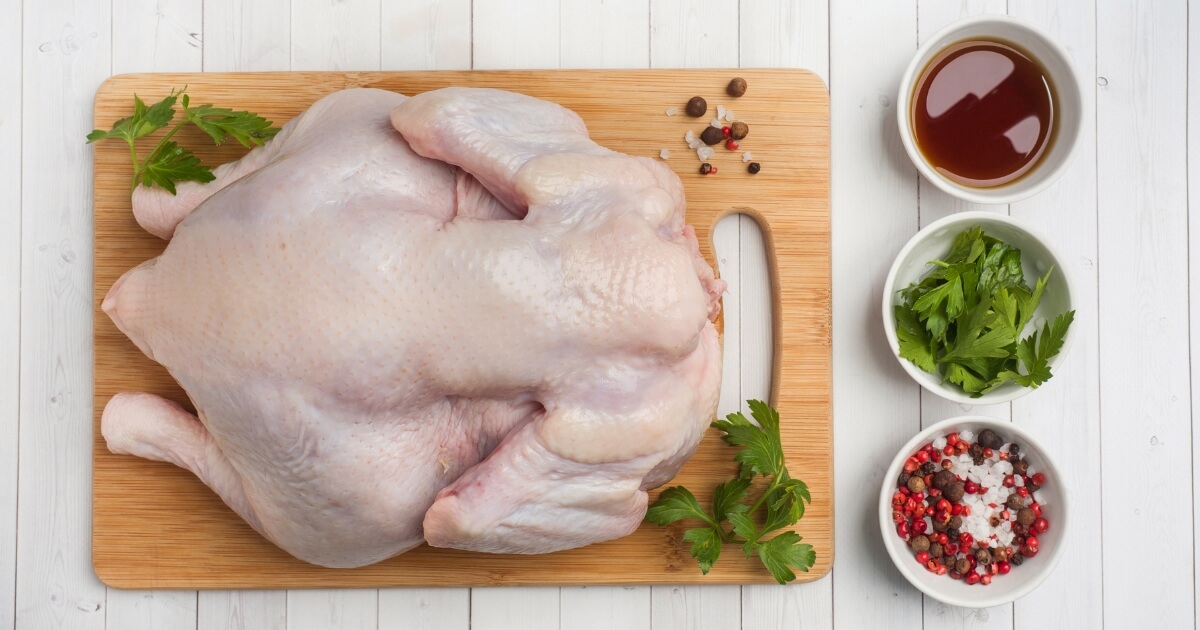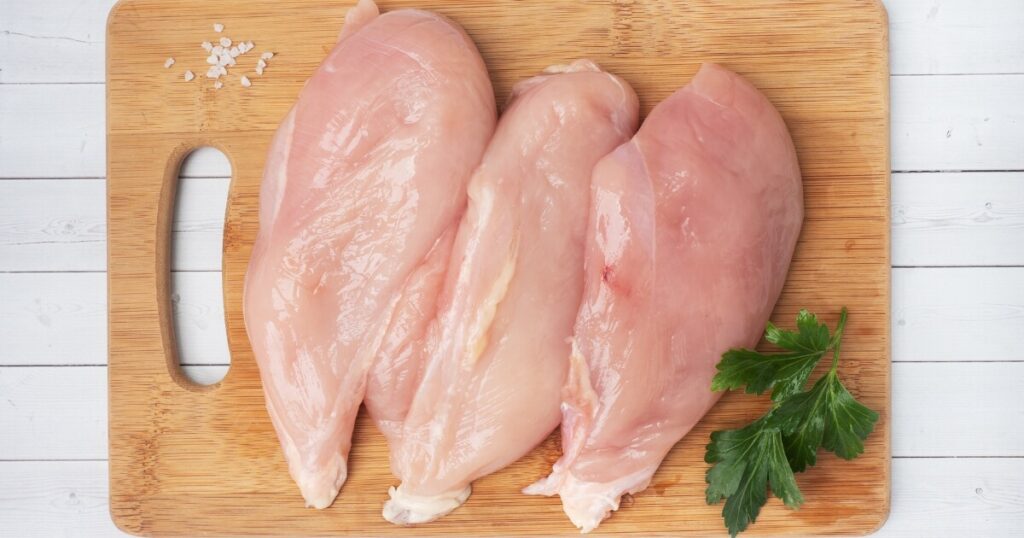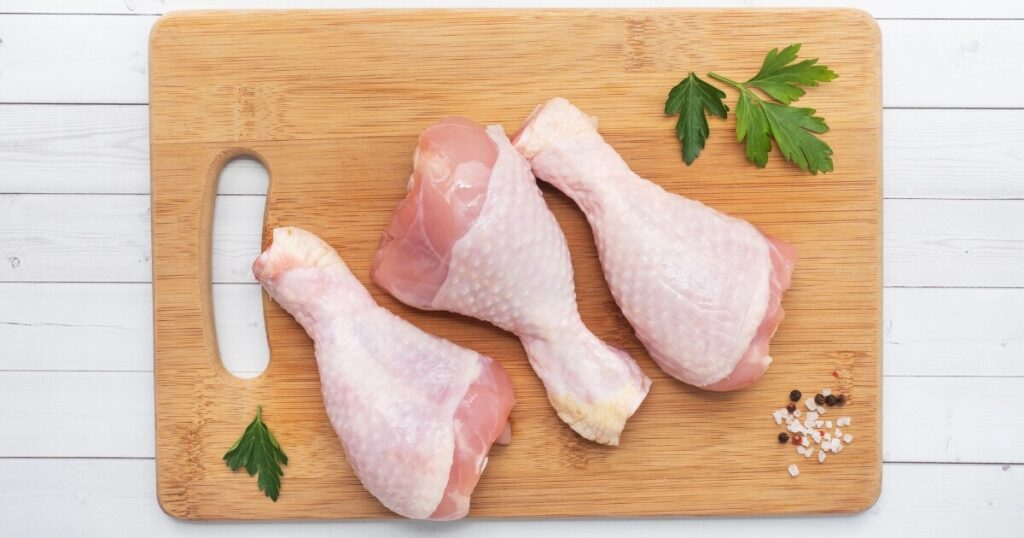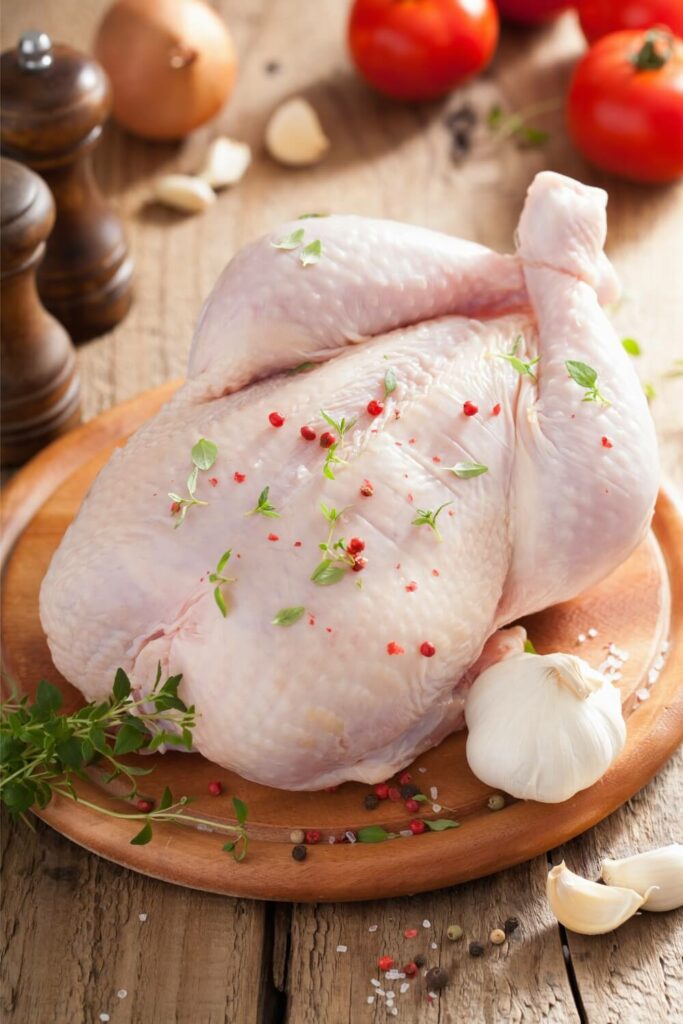Let’s talk chicken! I’ll cover how to pick the best cuts, store them safely, and cook them to perfection. I’ll even jump into what sides and sauces make your chicken dishes sing.
Think of this as your quick cheat sheet for chicken, a guide that’ll help you turn those cuts into delicious meals all week long.

Ready? Let’s get cluckin’! Sorry, I just had to.
Popular Cuts Of Chicken
Here are the most popular cuts at a glance:
- Chicken Breast: Lean and quick to cook, great for salads and stir-fries.
- Chicken Thigh: Fattier and flavorful, ideal for slow-cooked dishes.
- Chicken Drumstick: Kid-friendly and budget-friendly, perfect for grilling.
- Chicken Wing: The party favorite, versatile in flavors and cooking methods.
Other cuts include the backs, necks, gizzards, heart, liver, and oyster. Many of these are used to make chicken stock or broth.
Wait, what is a chicken oyster? It’s the most tender and delicious part of the chicken in my opinion, but a whole chicken on has 2 bite sized pieces.

The chicken breast is lean and quick to cook, making it a weeknight dinner hero. It’s the go-to for salads, stir-fries, and those times you want something light yet satisfying.
Then there’s the chicken thigh, the unsung hero of flavor. It’s a bit fattier than the breast, but that’s where the magic happens. The extra fat means it’s less likely to dry out, making it perfect for slow-cooked dishes. If you’re into richer, more robust flavors, try the thighs!
Don’t overlook the drumstick, especially if you’ve got kids. It’s like nature’s version of a handle, easy to hold and munch on.

Drumsticks are great for marinating and grilling and are a hit at picnics and barbecues. Plus, they’re usually more budget-friendly, so your wallet will thank you.
Chicken wings are the life of the party, especially when slathered in sauce. Wings are always a crowd-pleaser whether you like them spicy, sweet, or somewhere in between. They’re ideal for frying or baking and are the perfect finger food for social gatherings.

To get you going in the right direction, my guide on the best chicken to buy at the grocery store will take you through everything you need to know about selecting the right cuts.
How To Store Chicken
Storing chicken properly is like putting on a seatbelt; it’s a simple step that can prevent a lot of trouble down the road.
Quick Tips For Storing Chicken
- Fridge: Store in the coldest part, well-wrapped, or in a sealed container.
- Freezer: Use a freezer-safe bag, remove air, and label with the date.
- Thawing: Always thaw in the fridge or use the microwave’s defrost function.
- Shelf Life: Best used within 1-2 days in the fridge and within 3 months in the freezer.
Fresh chicken must be stored in the coldest part of your fridge, usually at the lower back. Make sure it’s well-wrapped in its original packaging or in a sealed container. This helps to keep it fresh and prevents any cross-contamination with other foods.
If you’re not planning to cook the chicken within a couple of days, it’s a good idea to freeze it. Just transfer it to a freezer-safe bag, squeeze out as much air as possible, and seal it tight. Label the bag with the date so you’ll know when it’s time to use it or lose it.
Frozen chicken can last up to six months, but it’s best used within three to keep the quality top-notch.
Thawing is another step where you’ll want to be cautious. Never thaw chicken at room temperature because it will become a breeding ground for bacteria.
The safest way to thaw it is in the fridge. If you’re in a hurry, you can defrost it in your microwave, but cook it immediately after to ensure safety.
How To Cook Chicken
Whether you’re planning a barbecue or a cozy dinner, there’s a cooking method tailored for each chicken cut.
- Grilling (Best for: Breasts, Wings) – Grilling is a quick and flavorful way to cook these leaner cuts. With a tasty marinade and a hot grill, you’ll have a delicious meal that’s perfect for outdoor dining.
- Slow-Roasting/Braising (Best for: Thighs, Drumsticks) – These cuts benefit from a low and slow approach. With some time in the oven or a simmering pot, you’ll end up with juicy, tender chicken that’s comfort food at its best.
- Frying (Best for: Wings, Drumettes) – Frying turns these cuts into crispy, golden delights.
- Stir-Frying/Sautéing (Best for: Breast Strips, Thigh Pieces) – This method is your go-to for a quick and tasty meal. A hot pan, a splash of oil, and you’ll have a stir-fry that’s bursting with flavor in no time.
Chicken Temperature Guide
Undercooked chicken is a no-go, as it can lead to foodborne illnesses. On the flip side, overcooked chicken turns into a dry, chewy mess. So, getting the temperature just right is key to a delicious and safe meal.
| Cut | Recommended Internal Temperature |
|---|---|
| Breast | 165°F (74°C) |
| Thigh | 165°F (74°C) |
| Wing | 165°F (74°C) |
| Whole Chicken | 165°F in thigh, 160°F in breast |
For most cuts, you’ll need to hit 165°F (74°C). That’s the internal temperature you’re aiming for to make sure that your chicken is fully cooked and safe to eat.
A meat thermometer is your best buddy here; just insert it into the thickest part of the cut, avoiding the bone.
Now, it changes a bit if you’re cooking a whole chicken.
The breast meat might hit 165°F before the thighs do. In this case, aim for 165°F in the thigh and around 160°F in the breast. The carryover heat should bring the breast meat up to a safe temperature as the chicken rests. Double-check it to make sure.
Here are a few guides to help you reheat your favorite chicken dishes:
What Goes With Chicken
Chicken is that social butterfly that gets along with just about any side or sauce you throw its way. It’s like the ultimate team player in the culinary world, making meal planning a breeze.
- Classic Sides (Best with: Roast Chicken, Grilled Breasts) – Mashed potatoes and steamed asparagus are your classic companions to a chicken dinner. They offer a comforting balance, letting the chicken shine while still holding their own.
- Fresh and Light (Best with: Grilled Breasts, Chicken Salad) – If you’re looking for something lighter, a crisp green salad or some roasted veggies are the way to go. They add a fresh, vibrant contrast, making the meal feel complete but not heavy.
- Sauces and Condiments (Best with: All Cuts) – Gravy is a classic, especially with roast chicken, but why stop there? A garlic herb sauce or even a zesty lemon vinaigrette can add a new layer of flavor. These sauces can turn even a simple chicken dish into something special.
- Unexpected Pairings (Best with: Wings, Thighs) – Feeling a bit adventurous? How about pairing your chicken with a mango salsa or even a drizzle of honey and Sriracha?
Chicken FAQs
Which cuts of chicken are white meat?
White meat in chicken is found primarily in the breast and wings. These cuts are leaner and cook more quickly than dark meat.
What is the most inexpensive cut of chicken to buy?
Chicken drumsticks are generally the most budget-friendly cut of chicken. Bone-in thighs are sometimes a close second.











